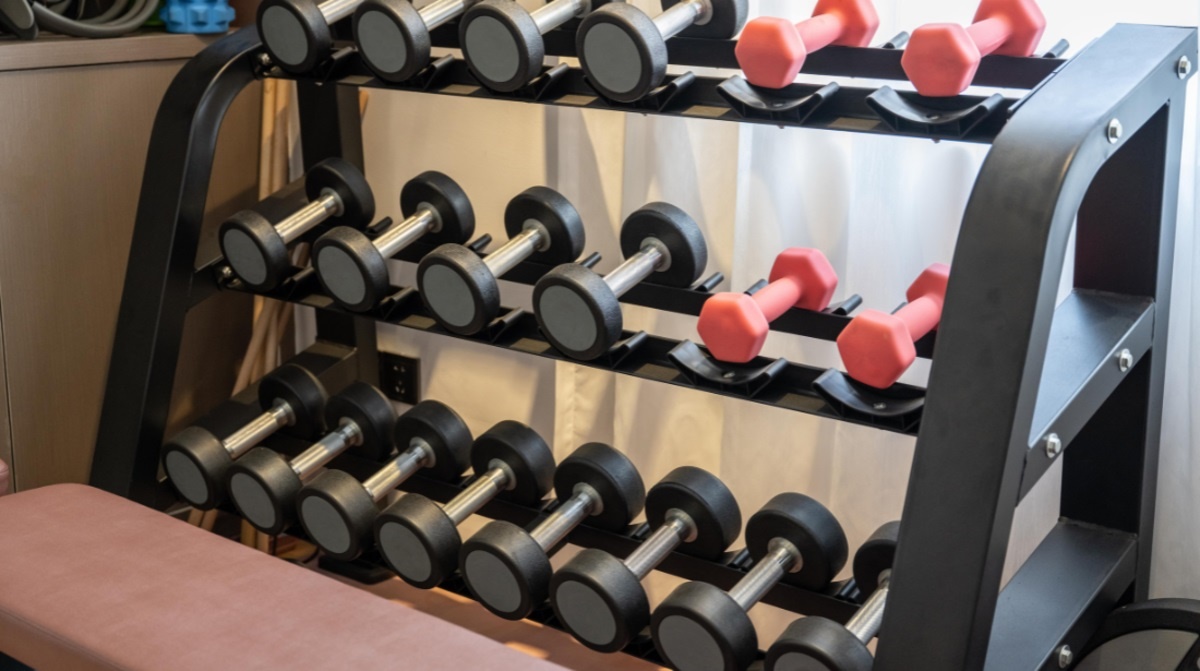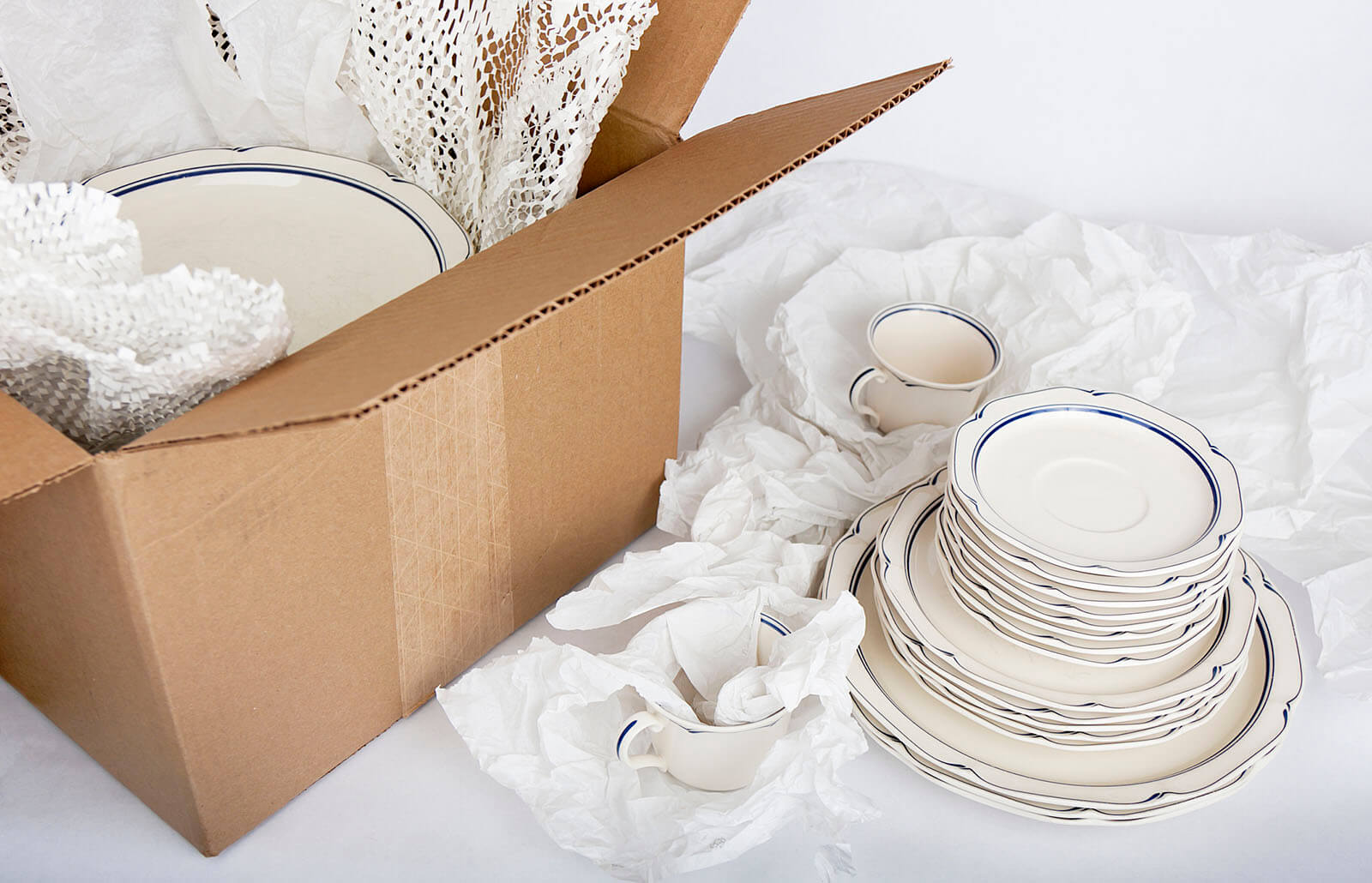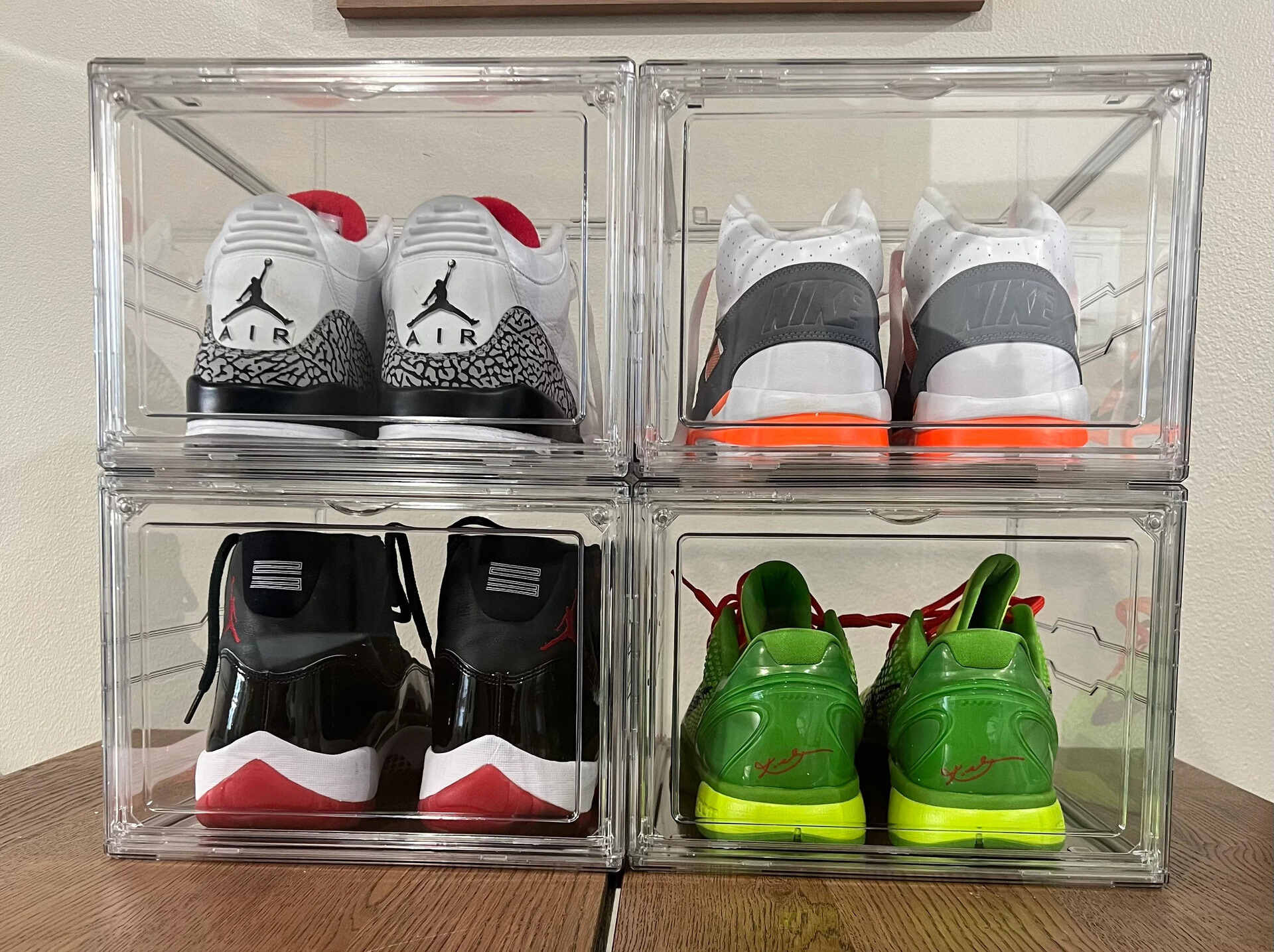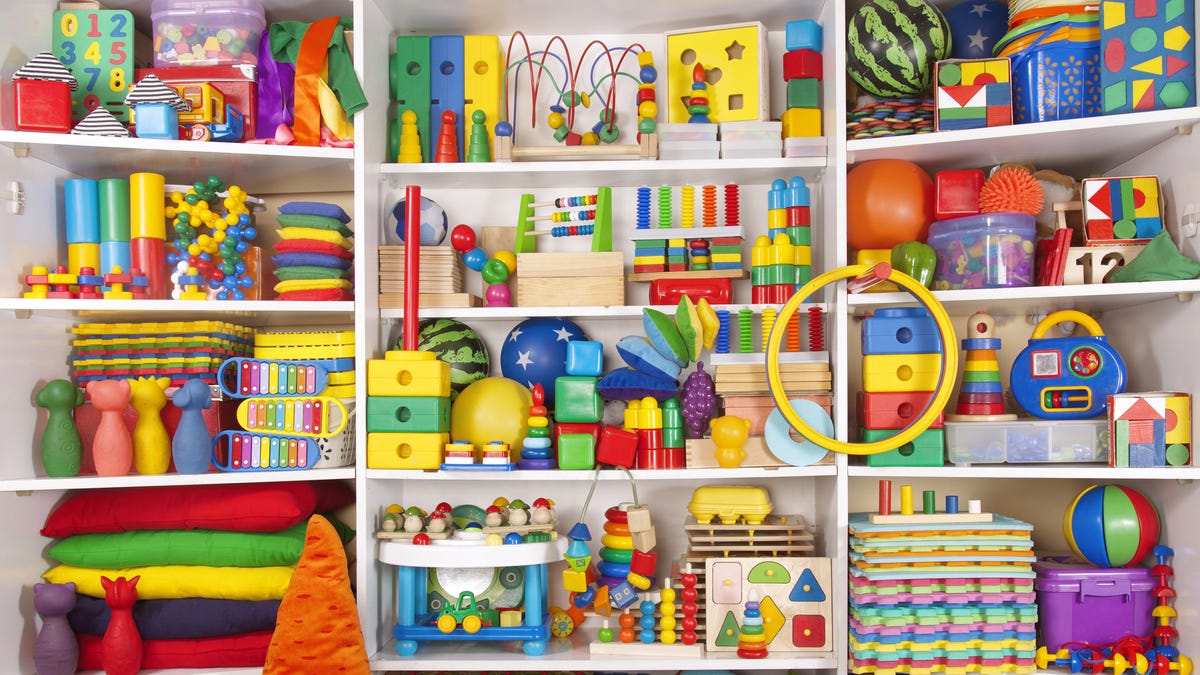

Articles
How To Store Dumbbells
Modified: February 28, 2024
Learn the best techniques and tips for storing dumbbells in this comprehensive articles covering various storage options and precautions. Keep your home gym organized and your dumbbells safe!
(Many of the links in this article redirect to a specific reviewed product. Your purchase of these products through affiliate links helps to generate commission for Storables.com, at no extra cost. Learn more)
Introduction
When it comes to fitness equipment, dumbbells are a popular choice for both beginners and seasoned enthusiasts. They are versatile, easy to use, and can be incorporated into a wide range of exercises. However, finding a proper storage solution for your dumbbells is just as important as using them correctly.
In this article, we will discuss the various aspects of storing dumbbells safely and efficiently. From choosing the right storage space to organizing them by weight, we will cover all the essentials that will help you keep your dumbbells in optimal condition and ensure a clutter-free exercise area.
Before we dive into the specifics of storing dumbbells, it’s crucial to mention a few safety precautions. No matter how you choose to store your dumbbells, always prioritize safety to prevent accidents and injuries.
Key Takeaways:
- Prioritize safety precautions, choose the right storage space, and consider DIY options for personalized dumbbell storage. Organize by weight and maintain regularly to ensure a safe and efficient workout experience.
- Clear the space, use proper lifting technique, and consider having a spotter nearby for heavier weights. Choose the right storage space, consider rack options, and DIY solutions for personalized storage. Organize by weight and maintain regularly for optimal condition and a safe workout environment.
Read more: How To Store Dumbbells At Home
Safety Precautions
To ensure a safe workout environment, follow these safety precautions when storing dumbbells:
- Clearing the space: Before setting up your dumbbell storage, make sure the area is clear of any obstacles or tripping hazards. Create a dedicated space where you can easily access and return the dumbbells without any hindrance.
- Proper lifting technique: When handling and moving dumbbells, always use proper lifting technique to avoid straining your muscles or causing injury. Engage your core, maintain a straight back, and lift with your legs rather than your back.
- Using a spotter: If you’re dealing with heavyweight dumbbells, it’s advisable to have a spotter nearby when lifting or removing them from storage. A spotter can provide assistance and ensure your safety in case you need help with the weight.
Now that we’ve covered the safety precautions, let’s move on to choosing the right storage space for your dumbbells.
Key Takeaways:
- Prioritize safety precautions, choose the right storage space, and consider DIY options for personalized dumbbell storage. Organize by weight and maintain regularly to ensure a safe and efficient workout experience.
- Clear the space, use proper lifting technique, and consider having a spotter nearby for heavier weights. Choose the right storage space, consider rack options, and DIY solutions for personalized storage. Organize by weight and maintain regularly for optimal condition and a safe workout environment.
Read more: How To Store Dumbbells At Home
Safety Precautions
When it comes to storing dumbbells, safety should always be a top priority. By following a few simple safety precautions, you can ensure a hazard-free exercise environment and prevent accidents or injuries.
Clearing the space
Before setting up your dumbbell storage, it’s essential to clear the space where you intend to keep them. Remove any objects, furniture, or clutter that may obstruct your path or pose a tripping hazard. Providing a clear, dedicated area for your dumbbells will allow for easy access and prevent accidents during storage and retrieval.
Proper lifting technique
One of the most common causes of dumbbell-related injuries is improper lifting technique. When handling and moving dumbbells, it’s crucial to use proper form and engage the appropriate muscles to prevent strain or injury.
Here are a few key points to keep in mind when lifting dumbbells:
- Engage your core muscles and maintain a neutral spine throughout the movement.
- Bend your knees and use your leg muscles to lift the dumbbells instead of relying solely on your back.
- Avoid twisting your body while lifting or lowering the dumbbells to maintain stability and prevent strain.
By following these guidelines, you can minimize the risk of musculoskeletal injuries and ensure a safe lifting experience.
Read more: How To Hide Dumbbells In Living Room
Using a spotter
If you’re working with heavy dumbbells or attempting exercises that require maximum effort, it’s advisable to have a spotter nearby. A spotter can provide assistance and ensure your safety in case you struggle with the weight or need help during the lifting process.
Having a trusted individual to spot you can offer reassurance and peace of mind, particularly when performing challenging exercises or pushing your limits. Your spotter can help prevent accidents, mitigate potential injuries, and provide assistance if you lose control of the dumbbells.
Remember, safety should always come first when storing and using dumbbells. By taking these precautions and prioritizing safety, you can create a secure workout environment and enjoy your fitness routine without unnecessary risks.
Choosing the Right Storage Space
When it comes to storing your dumbbells, selecting the right storage space is crucial for convenience, organization, and safety. Here are three key factors to consider when choosing the perfect spot for your dumbbell storage:
Considering the available area
First, take a look at the available area in your home or gym where you plan to store your dumbbells. Assess the size and layout of the space to determine the best storage solution. Consider the height, width, and depth of the area to ensure that it can accommodate the desired number of dumbbells.
It’s important to have enough room for easy access and retrieval of the dumbbells without overcrowding the space. Keep in mind that you may expand your collection in the future, so allocate some extra space for potential growth.
Determining the weight capacity
Each storage option has a maximum weight capacity that it can safely support. Before choosing a storage rack or solution, determine the weight capacity that suits your needs. This involves considering the average weight of your dumbbells and ensuring that the storage can handle that weight without compromising its structural integrity.
If you have a wide range of dumbbell weights, opt for a storage solution with a high weight capacity to accommodate the heaviest dumbbells in your collection. By doing so, you ensure that your storage can handle any weight you throw at it, providing a safe and secure place for your dumbbells.
Assessing the environment
Take a closer look at the environment in which you plan to store your dumbbells. Consider factors such as temperature, humidity, and overall ventilation. Dumbbells are typically made of materials like cast iron, rubber, or urethane, which can be affected by extreme temperatures or high humidity.
Choose a storage space that offers proper ventilation and protects the dumbbells from excessive heat, moisture, or dampness. This will help prevent damage and maintain the quality of your dumbbells for a longer period.
By taking these factors into account, you can select the ideal storage space for your dumbbells that suits your needs, fits within your available area, and provides a safe and conducive environment for your equipment.
Rack Options for Dumbbell Storage
When it comes to storing dumbbells, using a rack is a convenient and efficient solution. A well-designed rack not only keeps your dumbbells organized but also helps maximize the available space. Here are three common rack options for dumbbell storage:
Horizontal racks
Horizontal racks are an excellent choice for those with limited vertical space. These racks are designed to hold the dumbbells horizontally, with each dumbbell resting on its side. The rack typically has individual slots or trays that accommodate different dumbbell sizes.
The horizontal orientation of the dumbbells allows for easy access and retrieval, as you can simply lift them off the rack without any obstruction. It also provides a neat and streamlined appearance, making it visually appealing in any workout area.
Horizontal racks are available in various designs, including single-tier, two-tier, or three-tier options, depending on the number of dumbbells you have. They are typically sturdy and stable, providing a secure storage solution for your dumbbells.
Vertical racks
If you have ample vertical space available, vertical racks are a popular choice for dumbbell storage. These racks stand upright, with the dumbbells arranged vertically in a rack system. The dumbbells are aligned in a row, with one end resting on the rack and the other end elevated slightly.
Vertical racks offer a compact and space-saving solution, as they utilize the height of the room rather than the horizontal area. This is particularly beneficial for those with limited floor space or a small workout area.
With vertical racks, the dumbbells are generally organized in ascending order of weight, making it easier to locate and select the desired weight. Some vertical racks even come with numbered labels or color-coded slots for quick identification.
Read more: How To Store Basil From Store
Tiered racks
If you have a larger collection of dumbbells or prefer a more organized setup, tiered racks are an excellent option. These racks feature multiple tiers or levels, with each level accommodating a specific range of weight.
Tiered racks provide a systematic and visually appealing display of your dumbbells, allowing you to easily locate and access the desired weight. The graduated levels also allow for better weight distribution and stability, preventing the rack from becoming top-heavy.
These racks are typically constructed with durable materials and can handle a significant amount of weight. Depending on the design, some tiered racks may also provide additional storage space for accessories such as resistance bands or exercise balls.
Ultimately, the choice of rack for your dumbbell storage will depend on your available space, the size of your dumbbell collection, and your personal preferences. Consider the advantages and limitations of each type of rack to find the one that best suits your needs and enhances the organization and functionality of your workout area.
DIY Dumbbell Storage Solutions
If you’re looking for cost-effective and customizable options for storing your dumbbells, consider DIY solutions. With a little creativity and some basic materials, you can create your own dumbbell storage that suits your needs and adds a personal touch to your workout area. Here are three DIY dumbbell storage solutions:
PVC pipe storage rack
A PVC pipe storage rack is a simple and practical option for organizing your dumbbells. Start by measuring and cutting the PVC pipes into appropriate lengths, ensuring they are wide enough to fit the handle of each dumbbell securely.
Once you have the cut pipes, arrange them in a desired configuration, such as a horizontal or vertical arrangement. Attach the pipes together using PVC pipe connectors or strong adhesive, creating a sturdy rack structure.
This DIY solution allows you to customize the size and number of slots according to your dumbbell collection. You can also paint the PVC pipes in a color of your choice to add a personal touch and make the rack visually appealing.
Wooden crate storage
If you’re a fan of rustic or vintage aesthetics, repurposing wooden crates for dumbbell storage can be an excellent DIY option. Look for sturdy wooden crates that can comfortably fit your dumbbells and allow for easy access.
If needed, you can reinforce the crates by adding additional wooden boards or planks to create dividers and compartments for each dumbbell. Be sure to secure the added components with screws or nails to ensure stability.
Depending on the size and layout of the crates, you can stack them vertically or arrange them horizontally to suit your available space and preference. These wooden crates offer a charming and unique storage solution that can enhance the overall look of your workout area.
Read more: How To Store Store-Bought Bread
Wall-mounted pegboard system
A wall-mounted pegboard system provides a versatile and customizable option for dumbbell storage. Start by mounting a pegboard to the wall using screws or wall anchors, ensuring it is securely attached.
Next, attach sturdy hooks to the pegboard, spacing them apart to accommodate your dumbbells. You can choose hooks of different sizes to accommodate various dumbbell handle widths.
This DIY storage solution allows you to arrange your dumbbells according to your preference and easily adjust the configuration as needed. Additionally, you can incorporate other accessories, such as resistance bands or workout towels, by hanging them on the pegboard hooks.
When creating any DIY dumbbell storage solution, always ensure that the materials used are strong and can support the weight of your dumbbells. Regularly check the stability and integrity of the DIY storage system to prevent accidents or damage.
These DIY options offer flexibility, affordability, and the satisfaction of creating a storage solution tailored to your needs. Get creative and explore different DIY ideas to find the perfect match for your style and workout space.
Organizing Dumbbells by Weight
Properly organizing your dumbbells by weight not only helps to maintain a tidy workout space but also ensures quick and easy access to the desired weight. To efficiently organize your dumbbells, consider the following methods:
Sorting by weight increments
One effective way to organize your dumbbells is to sort them by weight increments. This involves grouping dumbbells that have similar weight ranges together, allowing you to easily locate the desired weight for your workouts. For instance, you can create separate sections or racks for light, medium, and heavy dumbbells.
Arrange the dumbbells within each weight section in ascending or descending order, depending on your personal preference. This cohesive arrangement makes it faster to select the appropriate dumbbell for your exercises, saving you time and effort during your workouts.
In addition to grouping dumbbells by weight increments, you could also consider color-coding the dumbbells using different-colored bands or stickers. This visual cue further enhances the organization and makes it even easier to identify the desired weight.
Using labeled storage bins
An alternative method to organize your dumbbells is by utilizing labeled storage bins. This approach is particularly useful if you have a diverse collection of dumbbells or if you prefer to store them in a way that keeps them out of sight.
Start by selecting storage bins that can comfortably fit your dumbbells. Ideally, the bins should be sturdy and have removable dividers or compartments to accommodate different dumbbell sizes.
Label each storage bin with the corresponding weight range or specific dumbbell weight. This labeling system helps you quickly locate the desired weight and ensures that the dumbbells are returned to their proper place after each use.
When storing the dumbbells in the labeled bins, make sure to arrange them in an organized manner, either by weight increments or any other system that works best for you.
This method not only keeps your dumbbells organized but also provides an added layer of protection by keeping them securely stored away and preventing any potential damage.
Remember to regularly review and adjust your organization system as you acquire new dumbbells or change your fitness routine. This will help maintain an efficient and organized storage solution that meets your evolving needs.
By organizing your dumbbells by weight, whether through sorting by weight increments or utilizing labeled storage bins, you can create a neatly arranged and efficient system that makes your workouts more seamless and enjoyable.
Read more: How To Store Basil From Grocery Store
Maintenance and Care for Dumbbells
To ensure the longevity and functionality of your dumbbells, proper maintenance and care are essential. By implementing a few simple practices, you can keep your dumbbells in excellent condition. Here are some tips to help you maintain and care for your dumbbells:
Cleaning the dumbbell handles
Regularly cleaning the handles of your dumbbells is important to remove dirt, sweat, and bacteria that may accumulate during your workouts. Use a mild detergent or cleaning solution diluted in water, and gently wipe down the handles with a soft cloth or sponge.
Be cautious when using harsh chemicals or abrasive cleaning agents, as they can damage the surface of the dumbbell handles. Additionally, avoid immersing the entire dumbbell in water, as this can lead to rust or damage to the weights or internal components.
Preventing rust or damage
To prevent rust or damage to your dumbbells, it’s important to store them in a dry and well-ventilated area. Avoid exposing them to excessive moisture, such as leaving them outside or storing them in a damp basement.
If your dumbbells have metal components, periodically check for signs of rust or corrosion. If you notice any rust spots, gently scrub them with a soft brush and use a rust remover or lubricant to protect the affected area. Promptly addressing rust can help prevent further damage and extend the lifespan of your dumbbells.
It’s also advisable to inspect the weight plates or heads of your dumbbells for any cracks or damage. If you notice any issues, contact the manufacturer or a professional for repair or replacement.
Lubricating moving parts
If your dumbbells have moving parts, such as adjustable dumbbells with locking mechanisms, lubricating these parts is crucial to ensure smooth operation and prevent wear and tear.
Use a silicone-based lubricant or a lubricating spray specifically designed for fitness equipment. Apply a small amount of lubricant to the moving parts and joints, following the manufacturer’s instructions.
Regularly lubricating the moving parts will minimize friction, reduce the risk of damage, and maintain the overall performance of your dumbbells.
In addition to these specific maintenance practices, it’s important to handle your dumbbells with care during use and storage. Avoid dropping them onto hard surfaces, as this can cause damage to the dumbbell weights and structural integrity.
By incorporating these maintenance and care practices into your routine, you can keep your dumbbells in optimal condition, ensuring their longevity and functionality for many workouts to come.
Read more: How To Store A Milkshake
Conclusion
Properly storing and maintaining your dumbbells is crucial for a safe and efficient workout experience. By following the tips and guidelines discussed in this article, you can ensure that your dumbbells are organized, protected, and in optimal condition for your fitness routine. Here’s a quick recap of the key points we covered:
First and foremost, prioritize safety precautions when handling and storing dumbbells. Clear the space, use proper lifting technique, and consider having a spotter nearby for heavier weights.
Choosing the right storage space is essential. Consider the available area, weight capacity, and environmental factors to select a storage solution that fits your needs.
Various rack options, such as horizontal racks, vertical racks, and tiered racks, are available for dumbbell storage. Choose the one that maximizes space and provides easy access to your dumbbells.
If you prefer a more personalized approach, consider DIY options such as PVC pipe storage racks, wooden crate storage, or wall-mounted pegboard systems.
Organizing your dumbbells by weight increments and utilizing labeled storage bins can make it easier to locate the dumbbells you need for your workouts.
Regular maintenance and care are vital to keep your dumbbells in excellent condition. Clean the handles, prevent rust or damage, and lubricate any moving parts regularly.
In conclusion, by implementing these storage and maintenance practices, you can ensure that your dumbbells remain in optimal condition, extend their lifespan, and enhance your overall workout experience. Remember to prioritize safety, organize efficiently, and maintain your dumbbells regularly to enjoy countless successful workouts with your trusted fitness companions.
Frequently Asked Questions about How To Store Dumbbells
Was this page helpful?
At Storables.com, we guarantee accurate and reliable information. Our content, validated by Expert Board Contributors, is crafted following stringent Editorial Policies. We're committed to providing you with well-researched, expert-backed insights for all your informational needs.










0 thoughts on “How To Store Dumbbells”